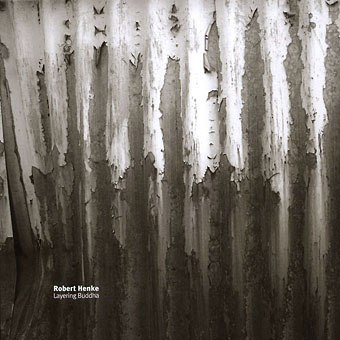Layering Buddha on CD and limited vinyl.
The Fm3 Buddha Machine is a low-fi loop playing device containing nine pre-recorded loops which cannot be changed by the user. Due to manufacturing imperfections, individual machines play the loops with a slightly different sound, pitch and duration. The built-in playback circuit, with its low sampling rate and bit resolution, produces a very rough sound, similar to ancient computer games or talking toys. Rich, spacious textures and moving echoes occur when many of these machines are played at the same time.
I recorded the sound of one single buddha machine at 96 kHz, using a state of the art A/D converter. The recording contains audio information up to 48 kHz, which makes it possible to transpose the loops down and expose otherwise inaudible hidden details. The pieces on this CD have been created by granulating, filtering, pitching and layering either the original loops, or new loops which were re-assembled out of parts of the originals. Most pieces are based on one single source loop. The pieces as they live within my computer are set up as continuously permutating structures and theoretically could go on forever, just as the loops do within the buddha machines.
I made quite long renderings of these permutations and later decided which excerpt of each structure to put on this CD. Therefore, the tracks are not closed works, but views onto a perpetual machinery.


wow. i have a buddha machine, and this is a beautiful use of it. brilliant work.
I dont think its very good. Its just a sample fo the FM3 stretched out and put in a nice box. A con artist!
@ danny:
“The pieces on this CD have been created by granulating, filtering, pitching and layering either the original loops, or new loops which were re-assembled out of parts of the originals.”
I think you did not read the text carefully. And you obviously did not listen to the work.